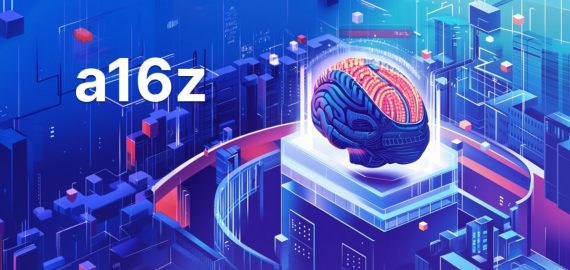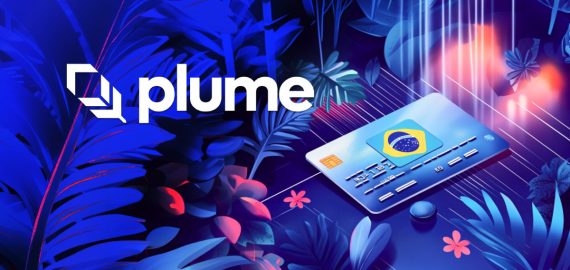The Future of Privacy and Low Gas Fees: Manta Network’s Innovations in Zero-Knowledge-Proof Technology


In Brief
Shubham Bhandari, Ecosystem Head at Manta Network, discussed Manta Pacific’s EVM compatibility, zero-knowledge-proof technology, privacy, low gas fees, and decentralized application support.
In anticipation of the upcoming Hack Seasons Conference, we had the pleasure of talking with Shubham Bhandari, the Ecosystem Head at Manta Network. During our discussion, Shubham provided insights into Manta Pacific’s EVM compatibility and the network’s focus on zero-knowledge-proof technology. He also highlighted the importance of privacy, low gas fees, and decentralized application support.
Many entrepreneurs are drawn to their field by a specific moment or event. What was your journey to Web3?
I started back in 2019, and initially, it was trading. Then, I started working more on the DeFi side, where I used to do research on the DeFi protocols based in Asia and India. After that, I started working with Polygon as a business analyst plus a BD of tier 1 projects. I used to work with them specifically on the gaming side.
I worked the whole 2022 cycle of gaming with them, and after that, I got an opportunity at Manta Network which is the official chain of Bybit. So, I worked as a head of gaming over there and soon back in October 2023, I started working with Manta as a head of ecosystem.
What advantages does Manta Pacific’s EVM compatibility offer to decentralized application developers?
We have been developing Manta Pacific since 2022. The primary focus was on layer 2 for mass adoption and low gas fees. Also, Manta is the only chain supported and invested by Binance Lab, and it is the first chain to use Celestia as a Decentralized Authenticator (DA) on layer 2. This has resulted in savings of around 4 million in gas fees over seven months, making it affordable even in Asian markets like India.
Manta Pacific has also focused on innovation, starting with privacy. We launched the Manta New Paradigm campaign to boost TVL before the token launch, which was later launched with major exchanges like Binance. Recently, Manta AI was introduced, and also our latest product, CeDeFi, has achieved a TVL of around 130 million. CeDeFi is similar to Binance’s product but allows users to directly manage custody through MetaMask.
Currently, we aim to earn a TVL of around 125 million within a month, making it more profitable during bear markets when people start depositing and holding assets.
Right now, Manta Network focuses on zero-knowledge-proof technology. Why did Manta decide to focus exactly on ZK?
When Manta started, it was not a layer 2; it was a privacy-focused layer 1 where you could send tokens to each other privately, similar to what ZK is planning to do right now. So, at that time, it was known as a private network.
That was our initial goal. However, we faced some issues with the ALM and all the government things because it was a private network, even though we don’t hold the data, and no one can review the data either. So, if cryptocurrency is banned in some areas, eventually, Manta will face issues because of that.
So, when we started working as a layer 2, we initially focused on the OP stack because OP was fully and massively adopted. But we already had a plan to shift to ZK with the help of CDKs. Right now, we are on the OP stack, but soon, we are going to shift to ZK, and we know that ZK will be the final goal for Manta Network.
With the introduction of universal ZK circuits on Manta Pacific, how do you plan to enhance the development and deployment of ZK-enabled contracts for Solidity smart contracts and dApps?
We worked on the privacy network, and after that, we did a lot of research on the ZK side. We found some good use cases for VRF, zkShuffle, and other technologies. That was the major reason we started with ZK circuits. ZK circuits are an open-source technology. If a project wants to build on the Manta Network, it can use the circuits and deploy a ZK application.
Apart from that, as you have seen recently, there are a lot of gambling games, a lot of card games that use VRF, and a lot of card games that use zkShuffle. So, that was the initial part when we started. Right now, on Manta Network, we have zkHoldem, which is a fully on-chain game where they have implemented ZK circuits.
That was the reason we initially started to research more on the ZK circuits: so that users or developers who are coming to Manta Network don’t have to face any difficulty while deploying the contract. It will be very simple and convenient for them, and we will have all the documentation ready for them so that the ZK technology can be easily adopted across the ecosystem.
Manta Network includes Manta Atlantic, which is based on the Polkadot. How does this complement Manta Pacific?
Manta Atlantic and Manta Pacific are two different chains. Right now, after the token launch, the major audience is people connected with Manta Network back in 2021. They were mainly on the Atlantic side, but the major use cases for Manta or maybe the dApps currently working on Manta are on the Pacific side. So, we try to have an official bridge that can easily help you go from the Pacific to the Atlantic.
Plus, right now, the major use of the Atlantic is to get the LST things sorted out. All the liquid staking things are now done on the Manta Atlantic side. Even if you hold tokens in the Pacific, you must stake them in the Atlantic.
Initially, we faced many issues, either on the bridging side or paying the gas fee on the Polkadot side, and there were some other issues. So, we created a unique infrastructure where even if you hold the tokens on Manta Pacific, you can easily deposit them, and you will get an LST token natively minted on Manta Pacific. Atlantic will be used specifically for the LST and liquid staking parts. Plus, it will also be used in some parts of the governance.
Manta Network has moved its data availability to Celestia, saving users around $1 million in transaction fees. Could you discuss the impact of this move on user experience?
If you have seen ZK chains until now, all the layers currently working on ZK are either slow or have a great gas fee compared to the OP stack. That was why we started with the OP stack, integrated Celestia, and then moved to ZK. We should have everything aligned.
With Celestia, users can only see the gas fee reduction on the front end, but it’s also very important and essential for us on the back end. Initially, we used to push 80% of the fees we charged to Ethereum to push the data. Still, we pay a very small amount to Celestia to store the data on their availability, and we can easily retrieve it. We can easily use the data, and it is also essential for users because they can easily transact.
So, suppose there is a fully on-chain game with many transactions to do while playing. It’s very simple and cheap for you, even compared to any other network. Okay, thank you.
The token launch of Manta Network was described as a rollercoaster. Can you share more details about the challenges you faced during the launch?
We had quite a small team, and most of them were engineers. The first difficult part was focusing more on the marketing side so that all the users and everyone were confirmed with the timeline.
As you know, we were listed on all the biggest exchanges, which was a major benefit for Manta, as we got exposure from all these big exchanges. However, once you go to big exchanges, people are waiting for your token, and even if a small mistake happens, even a one-minute or two-minute gap happens when you deposit or make a Token Launch.
We faced some difficulties with the RPCs on the day, but the community supported us. They waited for it, and eventually, they used some different wallets and got their airdrop. They were happy because they had been waiting for the Manta token for a long time.
The bad thing about the token launch was that maintaining and doing everything on time was very hectic. If you are doing the token for the first time, you might know how difficult it is to manage everything, including exchanges, market making, and everything else.
How did introducing yield-bearing assets natively into the Layer 2 network impact user interest and engagement?
I mentioned the New Paradigm campaign, which focused on the native yield. We have STONE and wUSDM, which are natively on Manta, like minting on Manta. They have the biggest liquidity on Manta right now. Recently, wUSDM got an investment, and they are quite closely working with governments as well because they are a kind of RWA project. So, they have a native yield of around 5%.
What we planned on the New Paradigm side was that if you bring your USDT, USDC, or ETH to Manta, deposit and log that ETH, and get STONE and wUSDM out of it, which is a yield-bearing stablecoin.
When you get the yield out of it, it is around 5%, and you get MANTA. Plus, you can use this token across the ecosystem so that you have a liquid position. You can also earn some liquidity by providing liquidity incentives. That was a cross-ecosystem that we created not just on the native yield but also on the other side.
Apart from that, I mentioned the CDFI. It’s also a kind of yield which we recently launched. It’s a combination of CDFI and DeFi, where users currently working on CDFI can go on the DeFi side and use the same product. But apart from that, those closely working on the DeFi side can easily earn or maybe get the exposure that Binance provides with the help of a DeFi application similar to MetaMask. So, you don’t have to give the custodial; it’s a self-custodial thing.
What role does the Manta DAO play in governing the Manta Network, and how can community members participate?
This is a question for our future, not for now. The Manta Foundation has not been launched yet, but we are planning to launch it this month, June 2024. There will be three components, actually four components. The first one will be the Manta Eco Fund, where we will invest in many projects with the Eco Fund’s help.
The second will be about Manta Grants, where we will provide grants to different categories interested in building and deploying on Manta. The third will focus on the whole ecosystem with the help of education and stuff like hackathons. We will also focus on that so that we can get some novel use cases, new public goods, and stuff on the Manta Network.
The fourth one will be about governance and the foundation. This will be a kind of pillar to all these. For example, if Manta is making a big grant or investment, it will be pushed to the forum. The forum will have a chance to approve it or reject it. After one week of checking out the comments, we will push it on Snapshot. On Snapshot, people who hold the Manta token can easily vote.
Disclaimer
In line with the Trust Project guidelines, please note that the information provided on this page is not intended to be and should not be interpreted as legal, tax, investment, financial, or any other form of advice. It is important to only invest what you can afford to lose and to seek independent financial advice if you have any doubts. For further information, we suggest referring to the terms and conditions as well as the help and support pages provided by the issuer or advertiser. MetaversePost is committed to accurate, unbiased reporting, but market conditions are subject to change without notice.
About The Author
Victoria is a writer on a variety of technology topics including Web3.0, AI and cryptocurrencies. Her extensive experience allows her to write insightful articles for the wider audience.
More articles

Victoria is a writer on a variety of technology topics including Web3.0, AI and cryptocurrencies. Her extensive experience allows her to write insightful articles for the wider audience.

















































